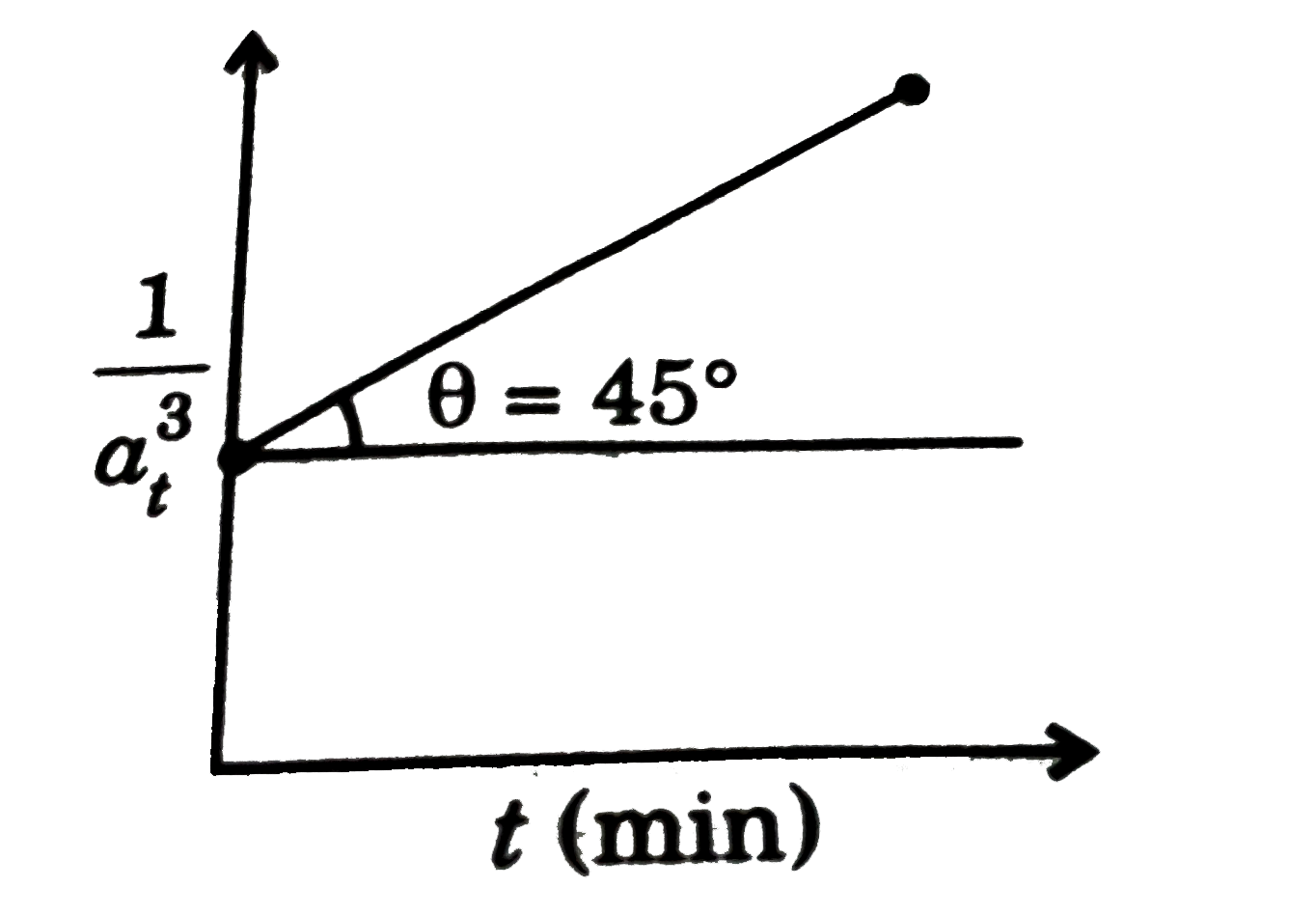For the reaction 2A + 3B → product, A is in excess and on changing the concentration of B from 0.1 M to 0.4 M, rate becomes doubled. Thus, rate law is :
dxdt=k[A]2[B]2
dxdt=k[A][B]
dxdt=k[A]0[B]2
dxdt=k[B]1/2
The correct Answer is:D
Step by step video, text & image solution for For the reaction 2A + 3B rarr product, A is in excess and on changing the concentration of B from 0.1 M to 0.4 M, rate becomes doubled. Thus, rate law is : by Chemistry experts to help you in doubts & scoring excellent marks in Class 12 exams.
Topper's Solved these Questions
- BOOK - GRB PUBLICATIONCHAPTER - CHEMICAL KINETICSEXERCISE - E. Methods to Monitor the Progress of Reaction43videos
CHEMICAL KINETICS
- BOOK - GRB PUBLICATIONCHAPTER - CHEMICAL KINETICSEXERCISE - F. Effect of Temperature and Catalyst92videos
CHEMICAL KINETICS
- BOOK - GRB PUBLICATIONCHAPTER - CHEMICAL KINETICSEXERCISE - C. Integrated Rate Laws73videos
CHEMICAL KINETICS
- BOOK - GRB PUBLICATIONCHAPTER - CHEMICAL BONDING-IEXERCISE - Subjective Type120videos
CHEMICAL BONDING-I
- BOOK - GRB PUBLICATIONCHAPTER - COORDINATION COMPOUNDSEXERCISE - SBJECTIVE TYPE98videos
COORDINATION COMPOUNDS
Similar Questions
For the reaction 2A+B→Products it is found that doubling the concentration of both reactants increases the rate by a factor of 8. But doubling the concentration of "B" alone only doubles the rate.What is the order of the reaction w.r.t to A?
View SolutionFor reaction A + B → products, the rate of the reaction was doubled when the concentration of A was doubled. The rate was also doubled when the concentration of both A and B were doubled. Then, order of the reaction with respect to A and B are :
View Solution
Knowledge Check
- Question 1 - Select One
For the reaction A+B products, it is observed that:
(1) on doubling the initial concentration of A only, the rate of reaction is also doubled and
(2) on doubling te initial concentration of both A and B, there is a charge by a factor of 8 in the rate of the reaction.
The rate of this reaction is given byARate = K[A][B]2BRate = K[A]2[B]2CRate = k [A][B]DRate = K[A]2[B] - Question 2 - Select One
For the reaction A+B products, it is observed that:
(1) on doubling the initial concentration of A only, the rate of reaction is also doubled and
(2) on doubling te initial concentration of both A and B, there is a charge by a factor of 8 in the rate of the reaction.
The rate of this reaction is given byARate = k[A]2[B]BRate = k[A][B]2CRate = k [A]2[B]2DRate = k[A][B] - Question 3 - Select One
For the reaction A+B→ products, doubling the concentration of A the rate of the reaction is doubled, but on doubling the concentration of B rate reamins unaltered. The overall order of the reaction is
A1B0C2D3
For the reaction A+B products, it is observed that:
(1) on doubling the initial concentration of A only, the rate of reaction is also doubled and
(2) on doubling te initial concentration of both A and B, there is a charge by a factor of 8 in the rate of the reaction.
The rate of this reaction is given byView SolutionFor a reaction 3A→2B, following graph is obtained, calculate rate of reaction when concentration of A is 0.2M.
 View Solution
View SolutionThe reaction X→ Products
follows first order kinetics. In 40 minutes, the concentration of X changes from 0.1 M to 0.025M. The rate of reaction when concentration of X is 0.01 M is:View SolutionThe reaction X→Y (Product ) follows first order kinetics. In 40 minutes, the concentration of X changes from 0.1M to 0.025 M , then rate of reaction when concentration of X is 0.01M is :
View SolutionFor a reaction A + B → Products, it is observed that doubling the concentration of B causes the reaction rate to increase four times, but doubling the concentration of A has no effect on the rate of reaction. The rate equation is therefore
View Solution

